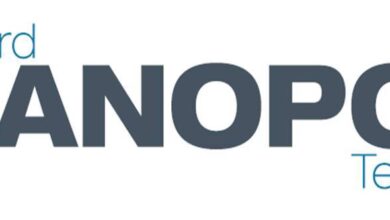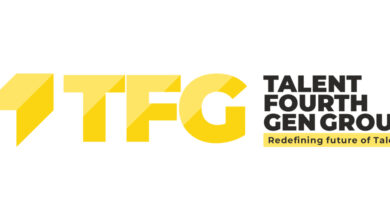Global Bipolar Disorder Drug Market Analysis and Forecast Report 2022-2030: In a Market Dominated by Atypical Antipsychotics, Novel Mechanisms of Action are a Key R&D Strategy – ResearchAndMarkets.com

DUBLIN–(BUSINESS WIRE)–The “Bipolar Disorder – Global Drug Forecast and Market Analysis to 2030” report has been added to ResearchAndMarkets.com’s offering.
The bipolar disorder market is competitive and crowded with a multitude of approved therapies, many of which are available as inexpensive generics.
Bipolar disorder, known originally as manic-depressive illness, is a mental disorder characterized by periods of mania and depression. Manic episodes are the distinguishing feature of this condition and consist of an abnormally elevated, expansive, or irritable mood, as well as persistently increased activity or energy.
Conversely, phases of depression involve significantly depressed mood and loss of interest or pleasure. The frequency, severity, and pattern of these episodes can vary considerably over time and among individuals, making bipolar disorder one of the most challenging psychiatric disorders to manage.
The approved drugs in the bipolar disorder market can be divided into two broad categories: mood stabilizers and antipsychotics. Lithium is widely considered to be the gold standard for bipolar disorder based on its efficacy as a maintenance treatment and its ability to treat acute episodes of both mania and depression.
Key Highlights
- Moderate growth is expected in the bipolar disorder market from 2020 to 2030.
- The publisher anticipates that seven late stage pipeline drugs will launch over the forecast period. These are expected to be the main driver of growth in the bipolar disorder market across the 8MM.
- The publisher expects Intra-Cellular Therapies’ Caplyta to become the top-selling drug in the bipolar disorder market with sales of $800M in 2030.
- The current key players in the bipolar disorder market are those that market atypical antipsychotic products. However, many products have lost market exclusivity or are facing imminent patent expiry. As such, many of the respective companies are expected to lose their positions in this market over the forecast period due to generic competition.
- Opportunities remain for pharmaceutical companies to develop drugs with improved safety profiles, as well as novel drugs developed specifically for bipolar disorder.
Scope
- Overview of bipolar disorder, including epidemiology, etiology, pathophysiology, symptoms, diagnosis, and disease management.
- Annualized bipolar disorder therapeutics market revenue, cost of therapy per patient, and treatment usage patterns in three patient segments ( bipolar I, bipolar II and cyclothymic disorder) forecast from 2020 to 2030.
- Key topics covered include strategic competitor assessment, market characterization, unmet needs, clinical trial mapping and implications for the bipolar disorder therapeutics market.
- Pipeline analysis: comprehensive data assessing emerging trends and mechanisms of action under development for bipolar disorder therapy. The most promising candidates in Phase III and IIb development are profiled.
- Analysis of the current and future market competition in the global bipolar disorder therapeutics market. Insightful review of the key industry drivers, restraints and challenges. Each trend is independently researched to provide qualitative analysis of its implications.
Key Topics Covered:
1 Bipolar Disorder: Executive Summary
1.1 Modest Growth Expected in the Bipolar Disorder Market from 2020-2030
1.2 In a Market Dominated by Atypical Antipsychotics, Novel Mechanisms of Action Are a Key R&D Strategy for Bipolar Disorder
1.3 Opportunities Remain for Products that Will Fulfill Unmet Needs in the Bipolar Disorder Market
1.4 Novel Late-Stage Pipeline Drugs Will Be a Key Driver of Growth
1.5 What Do Physicians Think?
2 Introduction
2.1 Catalyst
2.2 Related Reports
2.3 Upcoming Reports
3 Disease Overview
3.1 Etiology and Pathophysiology
3.1.1 Etiology
3.1.2 Pathophysiology
3.2 Classification
3.3 Prognosis
4 Epidemiology
4.1 Disease Background
4.2 Risk Factors and Comorbidities
4.3 Global and Historical Trends
4.4 Forecast Methodology
4.4.1 Sources
4.4.2 Forecast Assumptions and Methods
4.4.3 Forecast Assumptions and Methods: 12-Month and Lifetime Prevalent Cases of Bipolar Disorder
4.5 Epidemiological Forecast for Bipolar Disorder (2020-2030)
4.5.1 12-Month Total Prevalent Cases of Bipolar I Disorder
4.5.2 Age-Specific 12-Month Total Prevalent Cases of Bipolar I Disorder
4.5.3 Sex-Specific 12-Month Total Prevalent Cases of Bipolar I Disorder
4.5.4 Lifetime Total Prevalent Cases of Bipolar I Disorder
4.5.5 Age-Specific Lifetime Total Prevalent Cases of Bipolar I Disorder
4.5.6 Sex-Specific Lifetime Total Prevalent Cases of Bipolar I Disorder
4.5.7 12-Month Total Prevalent Cases of Bipolar II Disorder
4.5.8 Age-Specific 12-Month Total Prevalent Cases of Bipolar II Disorder
4.5.9 Sex-Specific 12-Month Total Prevalent Cases of Bipolar II Disorder
4.5.10 Lifetime Total Prevalent Cases of Bipolar II Disorder
4.5.11 Age-Specific Lifetime Total Prevalent Cases of Bipolar II Disorder
4.5.12 Sex-Specific Lifetime Total Prevalent Cases of Bipolar II Disorder
4.5.13 12-Month Total Prevalent Cases of Cyclothymic Disorder
4.5.14 Age-Specific 12-Month Total Prevalent Cases of Cyclothymic Disorder
4.5.15 Sex-Specific 12-Month Total Prevalent Cases of Cyclothymic Disorder
4.5.16 Lifetime Total Prevalent Cases of Cyclothymic Disorder
4.5.17 Age-Specific Lifetime Total Prevalent Cases of Cyclothymic Disorder
4.5.18 Sex-Specific Lifetime Total Prevalent Cases of Cyclothymic Disorder
4.6 Discussion
4.6.1 Epidemiological Forecast Insight
4.6.2 COVID-19 Impact
4.6.3 Limitations of the Analysis
4.6.4 Strengths of the Analysis
5 Disease Management
5.1 Diagnosis and Treatment Overview
5.2 Additional KOL Insights on Disease Management
6 Competitive Assessment
6.1 Overview
7 Unmet Needs and Opportunity Assessment
7.1 Overview
7.2 Effective Treatment Options for Bipolar Depression
7.3 Antipsychotics With a Low Risk of EPS and Metabolic Changes
7.4 Mood Stabilizers With Improved Safety Profiles
7.5 Education for Physicians in Order to Improve Diagnosis Rates
7.6 Novel Drugs Developed Specifically for Bipolar Disorder
8 R&D Strategies
8.1 Overview
8.1.1 Label Expansion
8.1.2 Novel Mechanisms of Action
8.1.3 Reformulations
8.2 Clinical Trials Design
8.2.1 Endpoints
8.2.2 Inclusion/Exclusion Criteria
8.2.3 Trial Duration
9 Pipeline Assessment
9.1 Overview
9.2 Promising Drugs in Clinical Development
10 Pipeline Valuation Analysis
10.1 Overview
10.2 Competitive Assessment
10.2.1 Bipolar Depression
10.2.2 Bipolar Mania
10.2.3 Agitation Associated With Bipolar Disorder
11 Current and Future Players
11.1 Overview
11.2 Deal-Making Trends
12 Market Outlook
Companies Mentioned
- AbbVie
- Actavis
- Alexza Pharmaceuticals
- Alkermes
- Allergan
- AstraZeneca
- BioXcel Therapeutics
- Bristol-Myers Squibb
- Celon Pharma
- Eli Lilly
- Intra-Cellular Therapies
- Jina Pharmaceuticals
- Johnson and Johnson
- Lundbeck
- Meiji Seika
- Merck
- NRX Pharmaceuticals
- Otsuka Pharmaceutical
- Pfizer
- Richter Gedeon
- Sumitomo Dainippon Pharma
- Sunovion Pharmaceuticals
- Vanda Pharmaceuticals
For more information about this report visit https://www.researchandmarkets.com/r/sug57y
Contacts
ResearchAndMarkets.com
Laura Wood, Senior Press Manager
[email protected]
For E.S.T Office Hours Call 1-917-300-0470
For U.S./CAN Toll Free Call 1-800-526-8630
For GMT Office Hours Call +353-1-416-8900




